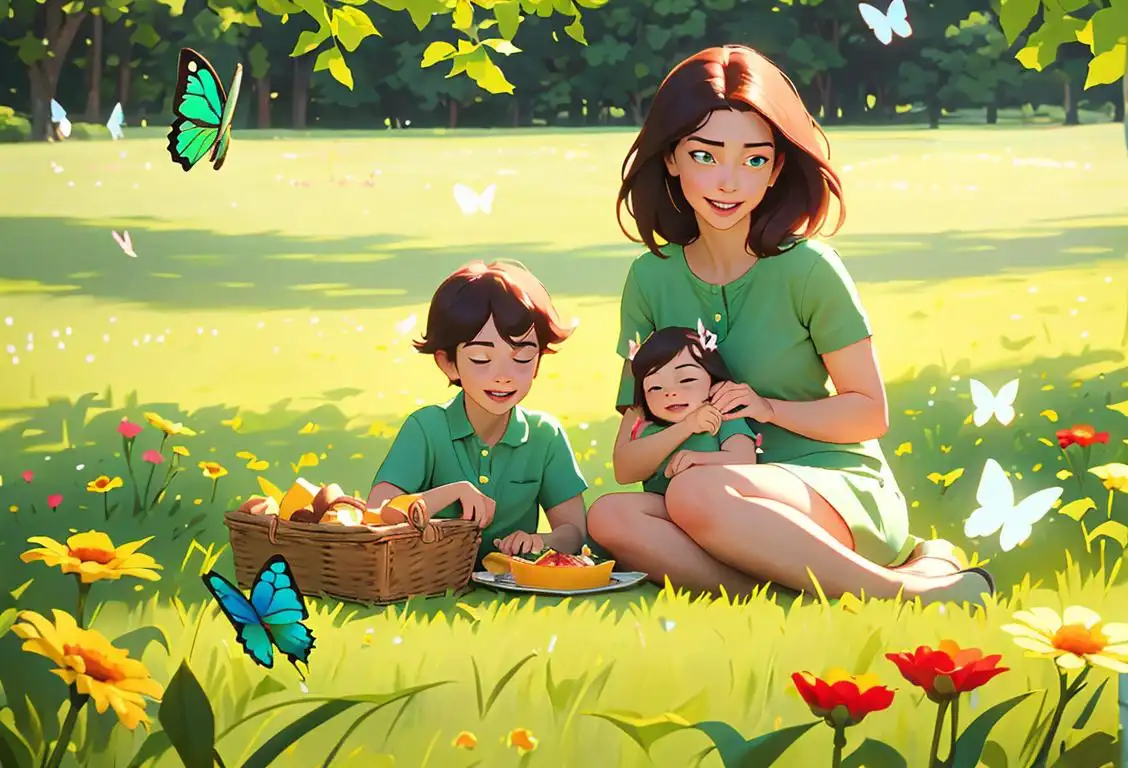National Dandelion Day

Ah, the humble dandelion. With their sunny yellow petals and penchant for taking over our lawns, these little flowers have captured the hearts of many. And so, it's no surprise that we have a special day dedicated to them - National Dandelion Day!
When is Dandelion Day?
It's national dandelion day on the 5th April.
The Legend of the Dandelion
Before we delve into the internet history of National Dandelion Day, let's take a moment to appreciate the significance of these vibrant flowers. The dandelion, or Taraxacum officinale, is more than just a pesky weed - it has a rich history and a reputation for brightening up even the dreariest of days.
According to legend, blowing on a dandelion puffball and making a wish will carry your dreams to the skies. It's like a botanical version of throwing a penny in a fountain, but with more whimsy and less chance of accidentally falling in.
And did you know that every part of the dandelion is edible? From the roots to the flowers, you can whip up a variety of dishes using these sunshine-colored wonders. So why not try dandelion salad, dandelion tea, or even dandelion wine? It's like turning your backyard into a gourmet restaurant - with a touch of wildflower magic!
The Internet Unearths National Dandelion Day
Now let's dive into the fascinating journey of how National Dandelion Day made its way onto the internet. It all started on April 5, 2020, when social media platforms erupted with dandelion-related posts and pictures, giving birth to a new internet sensation.
#DandyLove was the trending hashtag of the day, as people from all walks of life expressed their adoration for these resilient little flowers. From gardening enthusiasts to nature lovers and even those who simply got caught up in the dandelion frenzy, everyone was embracing the beauty of this once-underappreciated plant.
The internet exploded with dandelion-inspired art, photography, and even recipes. People shared tips on how to cultivate dandelions in their gardens and others shared heartwarming stories of how these yellow blossoms had brightened their lives. Dandelion-themed memes swept across the web, spreading joy and laughter to all corners of the digital world.
As the online buzz grew, National Dandelion Day became an annual celebration loved by people worldwide. It's a day to celebrate the simple joys and unexpected beauty found in the most unlikely places - just like those resilient dandelions that manage to thrive even in the most adverse conditions.
History behind the term 'Dandelion'
15th century
Discovery and Naming
In the 15th century, the humble dandelion was discovered and earned its name from the French phrase "dent de lion", meaning "lion's tooth". This name is attributed to the jagged shape of its leaves, which resemble the teeth of a lion.
16th century
Medicinal Uses
During the 16th century, dandelion gained recognition for its medicinal properties. It was commonly used in herbal remedies, particularly for digestive issues, such as improving liver function and relieving constipation. The plant's yellow flowers and green leaves were used to create tonics and teas.
17th century
Culinary Uses
In the 17th century, dandelions started to be incorporated into culinary practices. The leaves were often used in salads for their slightly bitter taste, similar to arugula or radicchio. Additionally, the flowers were used to create dandelion wine, a fermented beverage popular in Europe.
18th century
Symbolic Meanings
During the 18th century, dandelions began to acquire symbolic meanings. They became associated with resilience and the ability to thrive in challenging environments, owing to their ability to grow almost anywhere. Dandelions came to represent determination, overcoming obstacles, and the power of transformation.
19th century
Unwanted Weed
By the 19th century, the dandelion's presence in lawns and gardens was viewed as a nuisance in some countries, leading to its categorization as a weed. Its ability to spread quickly with wind-blown seeds made it difficult to control. This perception led to the development of various methods to eradicate dandelions in cultivated spaces.
20th century
Environmental Benefits
In the 20th century, dandelions regained some recognition for their environmental benefits. The deep taproot of the plant helps aerate and break up compacted soil. Additionally, dandelions provide a vital food source for bees and other pollinators early in the spring, aiding in their population growth.
21st century
Culinary Renaissance
In recent years, dandelions have experienced a culinary renaissance. Chefs and home cooks have begun utilizing all parts of the plant creatively. Dandelion flowers are used in desserts, and the leaves are incorporated into salads, smoothies, and stir-fries. This newfound appreciation has helped shift the perception of dandelions from pesky weeds to valuable culinary ingredients.
Did you know?
Did you know that the name 'dandelion' comes from the French phrase 'dent de lion,' which means 'lion's tooth'? It refers to the jagged shape of the plant's leaves. So the next time you see a dandelion, give a little roar of appreciation!Tagged
romance awareness food fun loved onesFirst identified
5th April 2016Most mentioned on
5th April 2020Total mentions
260Other days
Family Day
Action Day
Awareness Day
One Day
Opposite Day
Vodka Boyfriend Day
Kissing Fried Chicken Day
Happiness Day
Suicide Prevention Month Day
Believe Day









